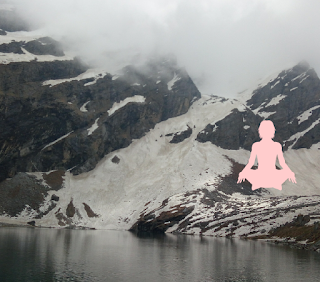Covid-19 Pandemic |Safety measures | Best method a home quarantine | Need not panic, stay home and stay safe
Novel
COVID-19 is triggering the re-emergence of obsessive-compulsive disorder.
Coronavirus is an infectious disease, and since December 2019 spread globally.
The World Health Organization declared the Covid -19 outbreak a pandemic. On
February 11, 2020, the World Health Organization announced an official name for
the virus, causes the 2019 novel coronavirus outbreak that first identified in
Wuhan China, as abbreviated Covid-19; devastating pandemics that have devoured
thousands of lives within three months. There are a large family of viruses
with some causing less severe disease such as cold, MERS and SARS. Covid -19
appears to inhabit both the upper and lower respiratory tracts (causes
SARS-COV-2), but in SARS- causes infections in the lower respiratory tract
which result in pneumonia. Time from exposure to onset of symptoms of Covid-19
is generally 2 and 14 day, average of 5 days. The lungs are the organ most
affected by the virus.
Coronavirus
Common
symptoms of coronavirus infection according to the World Health Organisation
(WHO) that include fever, cough, fatigue, muscles pain, breathing difficulties
and shortness of breath; and, in severe cases, symptoms become more advanced
such as severe acute respiratory syndrome, kidney failure and pneumonia can be
found. Except in some cases, nearly 6% of people with Covid-19 report a sore
throat, running nose, diarrhoea and vomiting.
Though
the mortality rate is just 1.3 per cent, more than 98000 patients (97.8 %) have
recovered from Covid-19, the fact is that the virus spread rapidly, recovery is
slow but need not panic. Need to avoid social, cultural and any other forms of
gathering. Self- quarantines or forced quarantines should continue, and be more
strictly enforced, so that check it to spread.
Together we can help stop the spread of Coronavirus and stay healthy
Safety
measures
Use a
tissue, hand sanitizer and wash hands properly with water and soap, especially
after coughing or sneezing.
Alcohol-based
hand sanitizer can be used.
Avoid
close contact with anyone, and if you are experiencing cough and fever.
Avoid
touching surfaces like railing, doors, window and gates frequently.
Wash
vegetables and fruits thoroughly before eating them.
Drinking
hot water and sun exposure can help.
Do not
touch your eyes, nose and mouth.
Do not
spit in public.
Do not
handshake and maintaining distance from others.
Avoid
participation in large gatherings.
Paracetamol
is a better option in case of severe fever rather than ibuprofen.
The home
quarantined person should
Stay
away from persons with co-morbidities within the household.
Environmental
sanitation.
Diagnostic
method: CT
scan, immunoassay, and reverse transcription-polymerase chain reaction
(rRT-PCR) from a nasopharyngeal swab.
UNICEF
The
virus does not settle in the air but grounded and is not transmitted by air.
Covid-19 lives on the hands for 10 minutes; Covid-19 is large where the cell
diameter is 400-500 micro and for this reason, any mask prevents its entry into
the nose, when it falls on a metal surface will live 12 hours and more. So,
clean the surface of the metals or things, and washing hands with soap and
water well enough.
What
does the coronavirus feel like when one caught infected?
The
patient can feel intense bouts of fever, severe cold, chatter teeth dry cough
and chest pains, loss of appetite, feel low energy all time, and exhaust to do
any work.
Some
steps that one can take to prevent one’s anxiety from spiralling out of
control.
Ensure
adequate sleep, good nutrition and lots of water a day.
Do yoga,
aerobics and walking-running in a safe place.
Do
simple breathing pranayama and asanas such as diaphragmatic breathing and Surya
bhed pranayama.
Contagions
that scared the world.
History
has seen some devastating epidemics, which have consumed thousands of lives
within a month in the world.
Some
major disease outbreaks that caused widespread fear are:
Plague
of Justinian (6th century, pandemic)
Black
Death (14th century, epidemic)
Smallpox:
viral rage, infection with Variola virus
Spanish
flu: human affliction, pandemic, 1918 and toll 60-110 MN
HIV/AIDS:
since 1981 and toll 37mn, pandemic and infectious
SARS:
Quick to spread (2003, toll 811, epidemic and infectious, severe acute
respiratory syndrome (SARS).
MERS
(Middle East Respiratory Syndrome).
EBOLA: Ebola first detected in 1976 near
Ebola River (Ebola virus disease (EVD) 2013-toll 11, 432, epidemic and
infections).



Very nice Information to prevent and take safety measures to stop the spread of coronavirus
ReplyDeletegood knowledge provided.very good .
ReplyDeleteknowledgeable article on covid-19
ReplyDeleteGud information
ReplyDeleteVery nice information
ReplyDeleteThanks sir 💐
awesome! I really appreciate the amazing work you have been doing. and in fact, this article was so amazing that I couldn't stop myself from sharing it with my blog readers.
ReplyDeleteCours de Yoga online